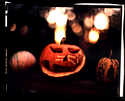Daniel's original post is asking a really good question.
Make's me wonder out loud: So, where do we learn stuff ?
Obviously, in web forums and blogs. But say we are disadvantaged and didn't have a computer and DSL or Cable ?
Or even then, what if everything we read in Forums isn't very useful or accurate ?
Probably have go work for somebody for a few years. Have to be a first rate film shooter, though. That's tough, these days.
Or, you could go work in a first rate B&W lab, and when you worked your way up until you were printing the A list, you'd be able to learn a lot.
Also tough.
Well, you could learn out of a book if you could promise that you'd try to understand what the author was actually saying instead of using the text to confirm your own opinions.
It's not the same world as it was when I was a kid and could cut the grass for a retired shooter who taught me stuff in exchange.
Thing is, until we've got some experience under our belts, we don't have anything to help us judge whether we're getting straight stuff or B.S.
Adams did a great service by documenting his work, and explaining how he did things. We err when we look to it as a recipe instead of a workflow,
but reliable Primary Sources are hard to come by and his Examples are as close as we are likely to get to an objective and experienced teacher.
For that, you could go study with Benson, or Dow, or some other vastly accomplished photographer & teacher (who doesn't advertise on the internet). Or go apprentice yourself to Carnie or Schwab.
Or, you can look at the Kodak published data as the raw data of an MFA degree and set yourself down to understand it and apply it. Pick up a book by Zakia, and you are set.
The Truth IS out there, and it was put there for a reason.
.







 ) for film choice? Tri-X, hp5?
) for film choice? Tri-X, hp5? .
.